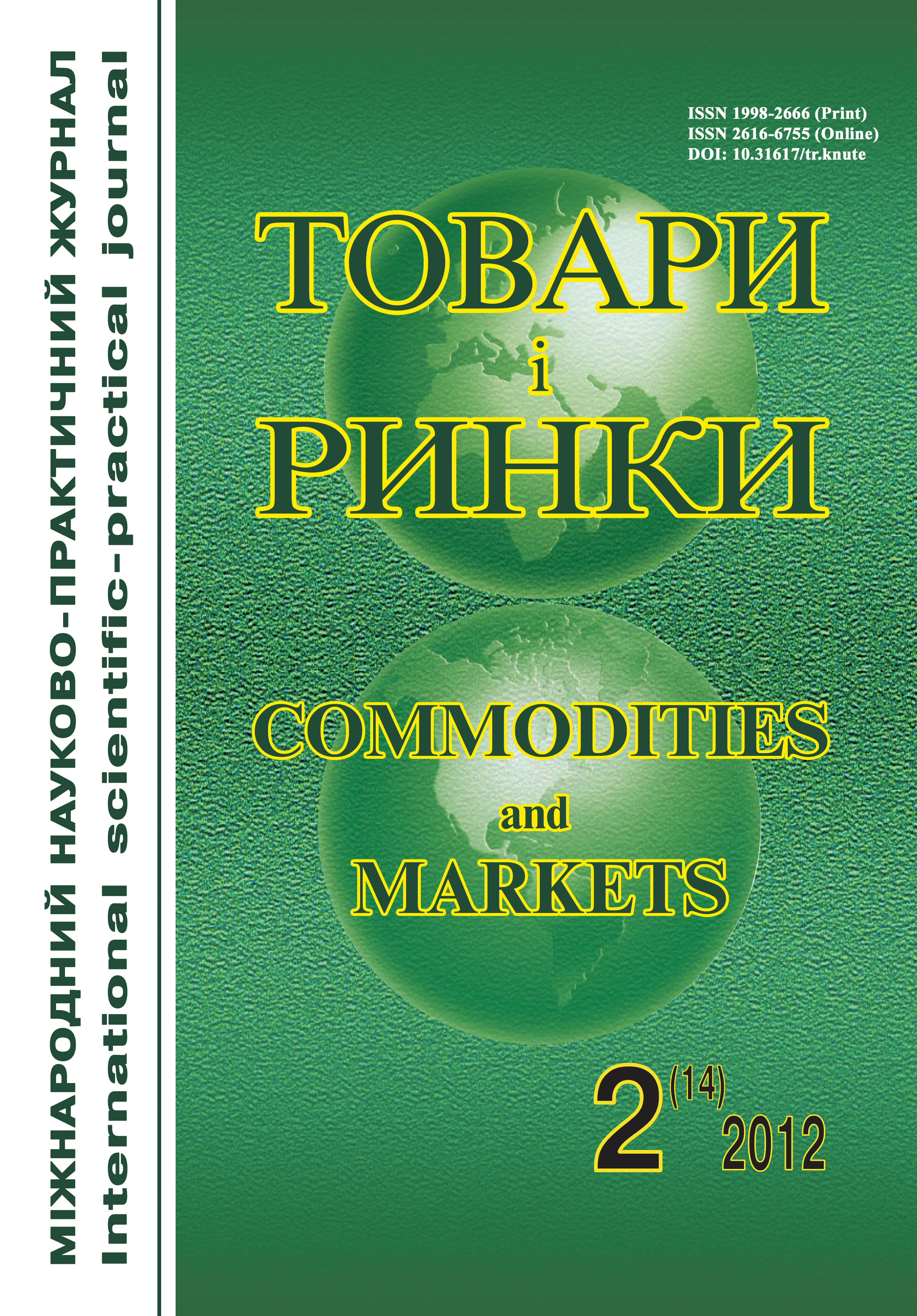Methodological principles of identifying consumer products
Keywords:
identification, subject of identification, criteria, parameters, methods of identificationAbstract
The increase of counterfeit goods in the market, their illegal production and cross-border transportation and other reasons lead to the practical necessity of the identification work. The extent of it is extremely limited and according to the current legislation they are performed only after certification testing. However, identification is actually implemented in practice of customs and institutions for consumer protection; without it we can not conduct any merchandising expertise and establish the compliance with certain positions of the UCGFT (Ukrainian Classification of Goods of foreign trade).
In a market economy a commodity becomes important target of identification. Almost all kinds of expertise start from identifying. If you receive a negative result of the examination of identity, there is no need for further examination. Identification activities are carried out by certain criteria. The task of establishing criteria and conducting research according to them is in the definition and comparison of properties (parameters) of researched objects. Selection of criteria depends on the conditions, objects and their interactions, the purpose of identification.
Identification criterion – a feature of a particular product that is suitable for establishing its compliance (identity) of a sample, information in documents accompanying, the regulatory and technical requirements, and belonging to a group of similar goods. Criteria for identification is divided into general (common to all products) and specific (taking into account the specific features of the product).
The choice of indicators and identification techniques to determine their adequacy is adherent to the principle of optimality – among a set of properties that are inherent to the product, those parameters (properties) that are necessary and sufficient for proof of identity are chosen. To organize the practical processes of identification in each case at the first stage the range of proven techniques, hardware means to identify goods without destruction – organoleptic, visual, rapid methods are chosen, the second stage- more complex: measurement, expert.
Thus, the identification of goods should include comprehensive assessment of the nature in which the greatest significance are the typical criteria and those that are difficult to falsify. In the current standards and other regulations such criteria are often lacking. Regulated in their organoleptic and physico-chemical parameters uncertainties identified products. That is why it is important to develop specific criteria and making appropriate amendments in the Standard Documents for consumer goods and raw materials.
Thus, inadequate clear mechanism for the identification and regulation of existing evidence, the lack of a data bank on criteria and indicators identified causes a large number of counterfeit goods. The development and introduction of new criteria and indicators by which identification should be provided, methods of research, while creating an appropriate legal framework is necessary. Development of methods of identification of goods will prevent import into Ukraine of dangerous and substandard goods, facilitate efficient monitoring of the classification of goods to prevent evasion of customs payments in full, the use of expert work of customs agencies.
References
Николаева М. А. Идентификация и фальсификация пищевых продуктов // С. А. Николаева, Д. С. Лычников, А. Н. Неверов. — М. : Экономика, 1996. — 106 с.
Вилкова С. А. Экспертиза потребительских товаров // С. А. Вилкова : — М. : Изд-во ТК "Дашковик", 2007. — 252 с.
Про безпечність та якість харчових продуктів / Закон України. — Режим доступу : http://zakon1.rada.gov.ua/laws/anot/771/97-%D0%B2%D1%80.
Про захист прав споживачів / Закон України. — Режим доступу : http://zakon2.rada.gov.ua/laws/show/1023-12.



